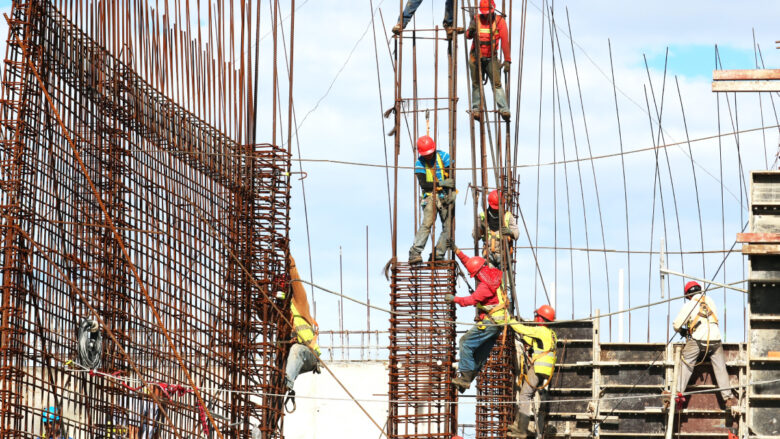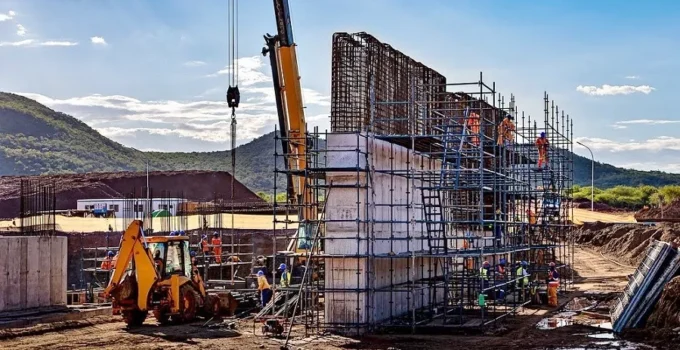It is important to understand that every construction project is unique. When deciding on the best way to recover a project, keep your expectations realistic and achievable. Before developing any project recovery plan, you need to know what the underlying issue is. This way, you will be able to create an effective recovery plan.
One reason why construction projects fail is because of an unexpected event. A good example of this is the COVID-19 pandemic. As a result of the pandemic, it has been reported that the construction industry diminished by more than 3.1% in 2020. During this period, countries enforced nationwide lockdowns, which caused many construction delays.
In some instances, delays were caused by virus outbreaks that affected crucial players. Construction companies adopted digital tools, including AI-powered construction optioneering platforms such as ALICE Technologies, to mitigate disruption. Digital tools made it possible for key players to plan for delays and reallocate resources, which increased efficiency.
Common reasons why construction projects stall
Approval delays
It is not uncommon for a project to stall because of approval delays. The most common approval delays that can affect a construction project are government approvals, building permits, and site regulations. To avoid approval delays, ensure that you have all licenses before construction.
Labor problems
Another factor that can significantly affect a construction project is hiring unskilled workers. Unskilled labor can lead to costly mistakes, especially when they affect central roles. To avoid this, ensure you canvass your workers well beforehand and that you have a good understanding of their strengths, weaknesses, and qualifications.
Scope creeps

Source: brinknews.com
A scope creep is caused when project owners continually change a project’s original scope. A scope creep is caused by many factors, one of them being poor communication among key stakeholders. Scope creep can also be caused by project owners who are unsure of what they want to achieve.
The best way to avoid scope creep is to ensure that the scope of work is agreed upon and signed by all key stakeholders. It is also important to know the terminology your client uses so that you are all on the same page.
Here are six steps you can use to drive construction recovery:
1. Get the right construction optioneering platform
If you are going to create a project recovery plan, you can start by choosing the right optioneering platform. An AI-powered optioneering platform is best because you can simulate different recovery options for your project. All you need is crucial information such as milestones, materials, crew, and equipment.
Once you key in this data, the platform will create various simulations to advise the contractor whether or not the recovery plan is viable. If you are going to come up with a recovery plan, then you need to make sure it works.
2. Assess the damage
To avoid unbiased opinions, hire a facilitator to do an audit of the entire project. The facilitator should objectively assess what went wrong and ensure that all project management documentation is available. Some of the questions that you need to answer during this stage are:
- When is the delivery date?
- What is required for the delivery date to be met?
- What has been done, and what is yet to be done?
- Are stakeholders willing to increase the delivery date and budget?
3. Engage with stakeholders

Source: ksapa.org
Once you have all your facts in place, it is time to present them to key stakeholders. One reason for engaging with stakeholders is to ensure that they are all aware of what went wrong and to reconfirm their willingness to revive the project. If the key stakeholders are willing to revitalize the project, it is time to recruit a recovery team.
4. Recruit a recovery team
When recruiting a recovery team, ensuring that you recruit qualified team members is key. Apart from being well trained, the team should have well-defined roles and responsibilities.
In addition, it is in your best interest to ensure that a proper and effective communication channel is established. The platform should make it easy for team members to share files, review designs, and be held accountable. When all key team members have been recruited, use their expertise to develop a new project plan.
5. Create a recovery plan
When creating a renewed plan, you must keep in mind why the original strategy fell short. The recovery plan you make must include the scope, a construction schedule, and a risk management plan. It is also important to plan available resources and how they will be utilized.
6. Present the plan to stakeholders
After you have made your plan, it is vital to have it validated so that key stakeholders know what is expected of you. Pitch your plan, note down their concerns, digest their feedback, and garner their support. Given the green light, you can then start executing your plan.
Conclusion

Source: unctad.org
In step one of this guide, you selected a suitable AI-based optioneering platform. This platform will help you monitor the progress of your goals and notify you of potential risks. It is essential to meet with your team to know their progress at least once a week.
Another important thing you need to do is ensure that stakeholders are always in the loop of what is happening. In addition, do not ignore risks. Once a threat has been identified, you must deal with it immediately. Lastly, as a project manager, you should always learn from your mistakes. Therefore, document every process and go through them to identify any shortcomings that might affect the recovery plan.




